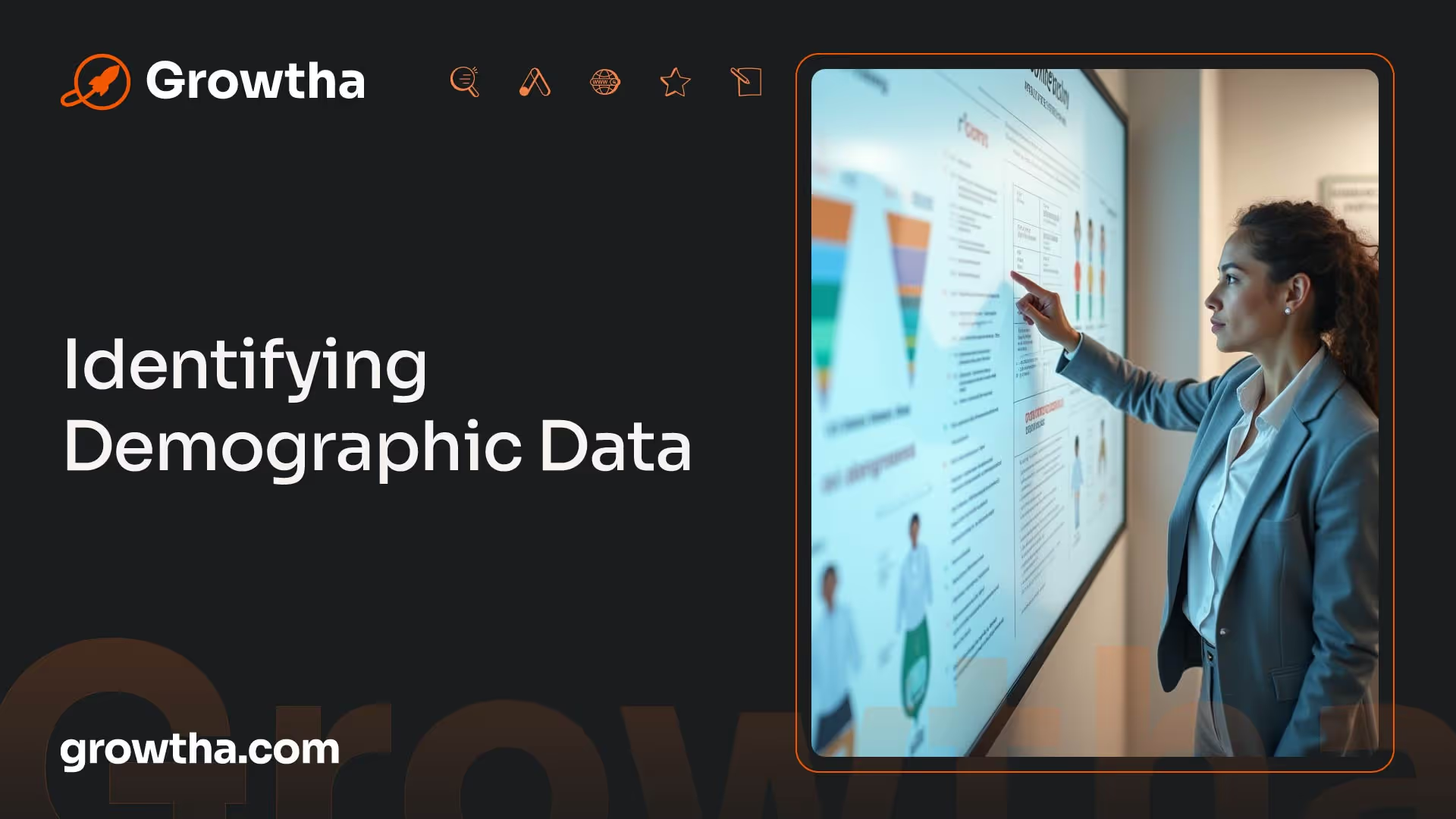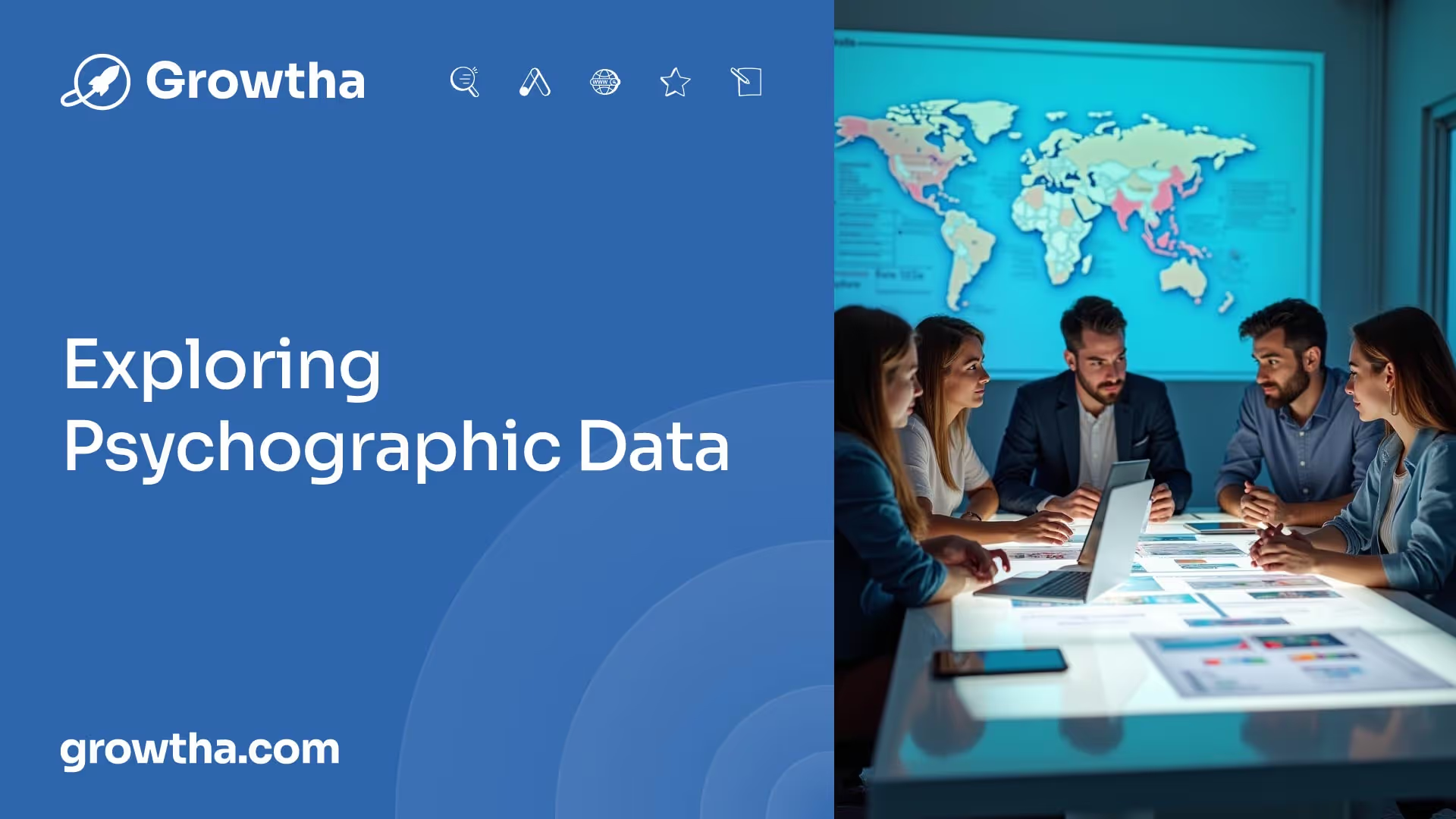4 Tips to Identify Your Target Market
This process, known as target market analysis, involves identifying the most valuable markets, developing buyer personas, assessing market gaps, and improving business strategies.


4 Tips to Identify Your Target Market
Understanding Target Market Analysis
To effectively reach and engage your ideal customers, it is crucial to understand and analyze your target market. This process, known as target market analysis, involves identifying the most valuable markets, developing buyer personas, assessing market gaps, and improving business strategies. By gaining insights into your target market, you can tailor your marketing efforts to effectively reach and connect with your intended audience.
Importance of Target Market Analysis
Target market analysis plays a vital role in the success of any marketing strategy. By identifying and understanding your target market, you can focus your efforts and resources on the most valuable segments of your audience. This enables you to craft tailored messages and develop products or services that meet their specific needs and preferences.
By conducting thorough target market analysis, you can:
- Identify the most and least valuable markets: Analyzing different market segments allows you to prioritize your efforts and resources effectively. You can concentrate on the markets that offer the greatest potential for growth and profitability.
- Develop buyer personas: Buyer personas are generalized representations of your ideal customers. They include demographic and psychographic attributes, allowing you to gain a better understanding of your target audience. Creating buyer personas helps you tailor your marketing messages and strategies to resonate with your intended customers.
- Find gaps in the market: Target market analysis helps you identify unmet needs or underserved segments in the market. By recognizing these gaps, you can develop products or services that fill those voids, giving you a competitive advantage.
- Assess the viability of a product or service: Understanding your target market enables you to evaluate the demand and viability of your offerings. By aligning your products or services with the needs and preferences of your target audience, you increase the chances of success.
- Improve business strategy: Target market analysis provides valuable insights that can inform your overall business strategy. It helps you make informed decisions about pricing, distribution channels, promotional activities, and customer engagement.
Benefits of Buyer Personas
Creating buyer personas is an essential component of target market analysis. By developing detailed profiles of your ideal customers, you gain a deeper understanding of their motivations, preferences, and behaviors. This knowledge allows you to create more targeted and personalized marketing messages that resonate with your audience.
Some key benefits of buyer personas include:
- Targeted messaging: Buyer personas help you create tailored messages that speak directly to the needs and desires of your ideal customers. This increases the likelihood of capturing their attention and engaging them with your brand.
- Improved marketing strategies: By understanding your target audience's preferences, you can optimize your marketing strategies to reach them more effectively. This includes selecting the most relevant channels, crafting compelling content, and delivering the right message at the right time.
- Enhanced product development: Buyer personas provide valuable insights into the features, benefits, and functionality that your target audience values. This information can guide the development of new products or improvements to existing offerings, ensuring they align with customer expectations.
- Better customer experience: By understanding your target audience, you can provide a more personalized and relevant customer experience. This includes tailoring your interactions, anticipating their needs, and delivering solutions that address their pain points.
By conducting target market analysis and developing buyer personas, you can lay a solid foundation for your marketing strategy. These insights allow you to connect with your target audience more effectively, create meaningful engagement, and drive business growth.

Identifying Demographic Data
To effectively identify your target audience, it is essential to leverage demographic data. Demographics provide foundational characteristics of the target audience, including age, gender, location, education level, occupation, and income [1]. This information is crucial for creating marketing campaigns that resonate with your intended audience and tailoring your messaging to address specific metrics.
Leveraging Demographics for Marketing
Understanding customer demographics is vital for businesses in designing marketing strategies and product offerings that cater to specific consumer populations [2]. By analyzing demographic data, you can gain insights into the characteristics and preferences of your target market. This knowledge allows you to refine your marketing messages, identify the most effective channels for reaching your audience, and develop products or services that align with their needs.
Utilizing demographic insights enables you to make informed decisions when it comes to segmentation, targeting, and positioning. By tailoring your marketing efforts to specific demographic groups, you can ensure that your messages resonate with the right audience, increasing the likelihood of engagement and conversion.
Utilizing Demographic Insights
Gathering demographic data can be done through various methods, including surveys, market research, and social media analytics. Social media platforms like LinkedIn and Facebook provide valuable data on metrics such as age group, educational background, geographic location, and travel preferences, offering insights into your target audience [2]. Leveraging these insights allows you to refine your marketing strategies and tailor your content to specific demographic segments.
To effectively utilize demographic insights, it's important to analyze the data and identify trends, patterns, and preferences within your target audience. This analysis helps you understand the unique characteristics of different demographic segments and tailor your marketing efforts accordingly.
By leveraging demographic data and utilizing the insights gained, you can refine your marketing strategies, better understand your target audience, and create campaigns that effectively reach and engage with your intended demographic groups.

Exploring Psychographic Data
Understanding your target audience goes beyond demographics. Psychographic data plays a significant role in identifying and connecting with your ideal customers. It involves delving into the psychological and emotional aspects of your target market, such as their interests, values, lifestyle, hobbies, and personality traits. Let's explore the significance of psychographics and how to implement psychographic insights effectively.
Significance of Psychographics
Psychographic data reveals valuable insights into the types of products your customers value and the types of brands they want to associate with [3]. By understanding the psychographics of your audience, you can craft messaging that resonates with them personally. This deeper understanding allows you to create more targeted and effective marketing campaigns.
Psychographics help you understand what motivates your audience, their aspirations, and their pain points. It allows you to uncover their emotional triggers and tailor your messaging accordingly. By connecting with your audience on an emotional level, you can build a stronger relationship and increase engagement and brand loyalty.
Implementing Psychographic Insights
Implementing psychographic insights requires a combination of research and analysis. Here are some strategies to effectively utilize psychographics:
- Market Research: Conduct surveys, customer interviews, and focus groups to gather information about your target audience's interests, values, and lifestyle choices. This primary research will provide valuable insights into their motivations and preferences.
- Data Analysis: Analyze data from various sources, such as social media analytics, website analytics, and customer feedback, to identify patterns and trends. This data will help you understand how your audience behaves and what drives their decision-making process.
- Customer Segmentation: Segment your audience based on their psychographic characteristics. By grouping individuals with similar values and interests, you can create more personalized marketing strategies and tailored messaging.
- Content Creation: Develop content that aligns with the psychographics of your target audience. Craft messaging that speaks directly to their interests, values, and aspirations. Use language, visuals, and storytelling techniques that resonate with them emotionally.
By implementing psychographic insights, you can create marketing campaigns that connect with your target audience on a deeper level. This understanding will enable you to position your products or services as solutions to their problems and build long-lasting relationships with your customers.

Conducting Primary Research
To truly understand your target audience and identify their needs and preferences, conducting primary research is essential. By gathering first-hand data from current and potential customers, you can obtain unique insights that are specific to your business and industry. This section will explore two key aspects of conducting primary research: gathering first-hand data and uncovering unique insights.
Gathering First-Hand Data
Primary research involves directly collecting data from individuals who belong to your target market. This can be done through various methods such as stakeholder analysis, market research, surveys, interviews, focus groups, or observation [4]. Each method has its own advantages and considerations, and selecting the most appropriate one depends on your resources, time, and specific research objectives.
Surveys and questionnaires are commonly used to gather quantitative data, allowing you to obtain numerical insights on customer preferences, behaviors, and demographics. Interviews and focus groups, on the other hand, provide a platform for in-depth qualitative discussions, allowing participants to express their opinions, experiences, and suggestions.
When conducting primary research, it's crucial to design well-structured and unbiased research instruments to ensure accurate data collection. Consider factors such as sample size, target demographics, and the specific research questions you want to address. By carefully planning and executing your primary research, you can gather data that directly reflects the characteristics and preferences of your target audience.
Uncovering Unique Insights
One of the key advantages of conducting primary research is the opportunity to uncover unique insights that are specific to your business and industry. By engaging directly with your target audience, you can gain a deeper understanding of their needs, pain points, desires, and expectations [3]. This information can be invaluable in shaping your marketing strategies, product development, and overall business approach.
During primary research, be attentive to the responses and feedback from participants. Look for patterns, common themes, and emerging trends that can provide insights into customer behavior and preferences. These unique insights can help you identify gaps in the market, discover untapped opportunities, and tailor your offerings to better meet the needs and expectations of your target audience.
Remember to analyze and interpret the data collected during primary research critically. Look for both explicit and implicit insights that may not be immediately apparent. By delving deeper into the data, you can uncover valuable insights that can guide your marketing decisions and help you create a more impactful and customer-centric approach.
Conducting primary research is a vital step in understanding your target audience. By gathering first-hand data and unearthing unique insights, you can gain a comprehensive understanding of your customers' needs and preferences. This knowledge will enable you to develop tailored marketing strategies and deliver products or services that resonate with your target market.

Analyzing Customer Needs
To successfully identify your target audience, it is essential to understand their needs and pain points. By gaining insights into what challenges they face and what solutions they are seeking, you can position your products or services strategically.
Understanding Pain Points
One of the key aspects of analyzing customer needs is understanding their pain points. These pain points are the problems, challenges, or frustrations that your target audience encounters in their daily lives or within a specific context. By identifying and addressing these pain points, you can position your offerings as valuable solutions.
To gain a deeper understanding of your target audience's pain points, it is crucial to conduct market research, surveys, and customer interviews. These methods allow you to collect first-hand data and valuable insights directly from your target audience. By listening to their experiences and challenges, you can identify common pain points and patterns that can guide your marketing strategies.
Positioning Solutions Strategically
Once you have identified the pain points of your target audience, it is important to position your products or services as strategic solutions. This involves aligning your offerings with the specific needs and challenges of your target market.
By highlighting the unique features, benefits, or capabilities of your offerings, you can demonstrate how they address the pain points of your target audience. This strategic positioning ensures that your target market understands the value and relevance of your products or services in solving their problems.
To optimize the sales process and improve customer retention, it is also crucial to analyze the buying behavior of your ideal customers. This includes understanding their purchase patterns, influencers on buying decisions, and factors contributing to customer loyalty. By gaining insights into their buying behavior, you can tailor your marketing efforts and sales strategies to maximize their effectiveness.
By analyzing customer needs and strategically positioning your solutions, you can effectively engage with your target audience and provide them with the products or services they are seeking. Understanding their pain points and addressing them through targeted marketing and communication efforts will help you build strong connections and drive success in your business.
Communication Strategies
When it comes to identifying your target audience, communication strategies play a crucial role in effectively reaching and engaging with them. Tailoring messages and choosing effective communication channels are two essential components of successful communication strategies.
Tailoring Messages
Developing communication messages that resonate with your target audience is vital. By conveying key points or information in clear, concise, consistent, and compelling language and visuals, you can ensure that your message connects with your audience [4]. To tailor your messages effectively, consider the following tips:
- Understand Your Audience: Gain a deep understanding of your target audience's needs, preferences, and pain points. This understanding will help you craft messages that address their specific concerns and resonate with them.
- Use Customer Language: Speak in a language that your audience understands and relates to. Avoid jargon or technical terms that may confuse or alienate them. Instead, use language that is relatable, clear, and easy to comprehend.
- Highlight Benefits: Focus on the benefits and value that your product or service offers to your audience. Demonstrate how your offering can solve their problems or improve their lives. Emphasize the unique selling points that differentiate you from competitors [5].
- Maintain Consistency: Ensure that your messages align with your brand identity and remain consistent across different channels. Consistent messaging helps build trust and familiarity with your audience.

Choosing Effective Channels
Selecting the right communication channels is essential to maximize the impact of your messages. The appropriate channels ensure that your message reaches the intended audience effectively and resonates with them [4]. Consider the following factors when choosing communication channels:
- Know Your Audience's Preferences: Understand the communication channels that your target audience prefers and actively engages with. This could include social media platforms, email newsletters, blogs, or traditional advertising channels. By focusing on the channels your audience frequents, you increase the chances of your message being seen and heard.
- Consider the Nature of Your Message: Different messages may be better suited for different channels. For example, visual content may perform well on platforms like Instagram or YouTube, while detailed information may be better conveyed through blog posts or email newsletters. Tailor your channel selection based on the type and format of your message.
- Evaluate Channel Effectiveness: Continuously monitor and evaluate the effectiveness of your chosen communication channels. Analyze metrics such as reach, engagement, and conversion rates to determine which channels are most successful in reaching and resonating with your audience. Adjust your strategy accordingly to optimize your communication efforts.
By tailoring your messages to your target audience and selecting effective communication channels, you can enhance your ability to connect with your audience, convey your message effectively, and achieve your marketing objectives. Remember to monitor and evaluate your communication results to gain insights and refine your strategies over time.
References
[1]: https://www.linkedin.com/pulse/understanding-your-ideal-customer-profile-key-geetu-sharma
[2]: https://www.techtarget.com/whatis/definition/customer-demographics
[3]: https://www.bigcommerce.com/articles/ecommerce/target-market-analysis/
[4]: https://www.linkedin.com/advice/0/how-do-you-engage-communicate-your-target-audience
[5]: https://www.business.com/articles/how-to-differentiate-your-product/







